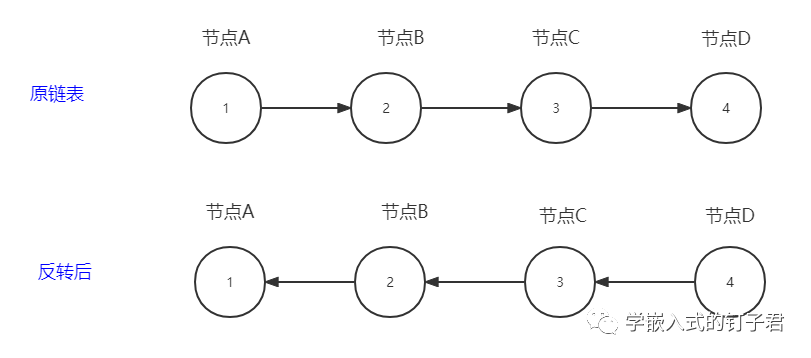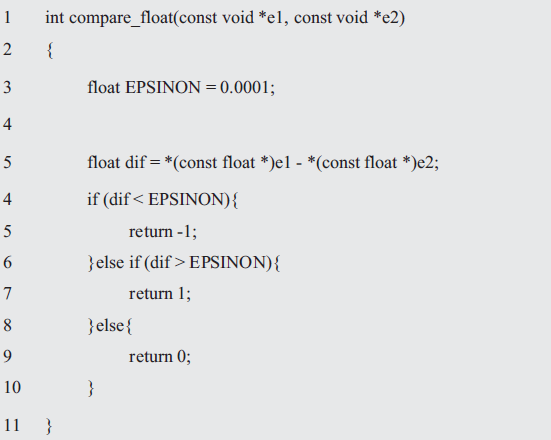在前面的文章中,已经对 ArrayBlockingQueue 进行了一次源码分析,对它的核心源码做了分析,今天来解析一波同为 BlockingQueue 家族中的一员的 LinkedBlockingQueue。它的底层基于单向链表实现。

先看一看它的 Node 内部类和主要属性、构造函数。
Node
static class Node< E > {
E item;
Node< E > next;
Node(E x) { item = x; }
}
Node 是 LinkedBlockingQueue 的基石。 它如第一张图所示的一个单向链表形式的内部类,item 是当前节点的内容,next 指向的是下一个 Node 节点。
属性
//容量
private final int capacity;
//队列中元素的数量
private final AtomicInteger count = new AtomicInteger();
//链表的头节点
transient Node< E > head;
//链表的尾节点
private transient Node< E > last;
//出队锁
private final ReentrantLock takeLock = new ReentrantLock();
//当队列没有元素了,出队锁的线程会加入 notEmpty 条件队列中被阻塞,等待其它线程唤醒
private final Condition notEmpty = takeLock.newCondition();
//入队锁
private final ReentrantLock putLock = new ReentrantLock();
//当队列满了,入队锁的线程会加入 notFull 条件队列中被阻塞,等待其它线程唤醒
private final Condition notFull = putLock.newCondition();
- 从属性中就可以看出 LinkedBlockingQueue 和 ArrayBlockingQueue 的差异点: ArrayBlockingQueue 只有一把 ReentrantLock 锁,入队和出队相互互斥。 LinkedBlockingQueue 分了出队锁 takeLock 和入队锁 putLock,两把锁相互不阻塞。
- capacity 是 LinkedBlockingQueue 的容量,表示 LinkedBlockingQueue 是一个有界队列。
构造函数
LinkedBlockingQueue 提供了三个构造函数。

LinkedBlockingQueue()
public LinkedBlockingQueue() {
this(Integer.MAX_VALUE);
}
LinkedBlockingQueue() 构造函数直接调用带参数的构造函数,参数被设置为 2 的 31 次方 - 1
LinkedBlockingQueue(int capacity)
public LinkedBlockingQueue(int capacity) {
//检查容量大小
if (capacity <= 0) throw new IllegalArgumentException();
this.capacity = capacity;
//构造一个 null 节点
last = head = new Node< E >(null);
}
LinkedBlockingQueue(int capacity) 构造函数做了三件事:
- 先检查参数是否大于 0,不大于 0 就抛出异常。
- 设置 capacity 容量为参数大小。
- 构造了一个 null 节点,赋值给 last 和 head。
- head 的 item 元素永远是一个 null。
LinkedBlockingQueue(Collection c)
public LinkedBlockingQueue(Collection< ? extends E > c) {
//容量是最大值
this(Integer.MAX_VALUE);
final ReentrantLock putLock = this.putLock;
//加锁
putLock.lock();
try {
int n = 0;
for (E e : c) {
if (e == null)
throw new NullPointerException();
if (n == capacity)
throw new IllegalStateException("Queue full");
//真实的入队操作
enqueue(new Node< E >(e));
++n;
}
//设置元素的数量
count.set(n);
} finally {
//解锁
putLock.unlock();
}
}
- LinkedBlockingQueue(Collection c) 调用了 LinkedBlockingQueue(int capacity) 构造函数并将参数设置成了最大值。
- putLock 加锁后,将集合中的元素一个个遍历并且入队。
- 设置元素的数量就是集合中元素的数量。
- 在遍历元素时,会将 null 元素抛出异常并且检查队列是否满了。
入队
LinkedBlockingQueue 有多种入队方法,当队列满了之后它们的处理方法各不相同。在入队之前和入队之后的操作都是相同的。
offer
//LinkedBlockingQueue.offer()
public boolean offer(E e) {
//检查是否为 null
if (e == null) throw new NullPointerException();
//检查队列是否满了,队列满了返回 fasle
final AtomicInteger count = this.count;
if (count.get() == capacity)
return false;
//初始化一个 size
int c = -1;
//创建一个 Node 节点
Node< E > node = new Node< E >(e);
//putLock 加锁
final ReentrantLock putLock = this.putLock;
putLock.lock();
try {
//如果没有满队,则入队
if (count.get() < capacity) {
//入队
enqueue(node);
//返回元素的数量并且元素的数量 + 1
c = count.getAndIncrement();
//元素的数量 + 1 还没有满队,还有剩余的容量空间,唤醒 notFull 队列中因为队列满了而等待入队的线程。
if (c + 1 < capacity)
notFull.signal();
}
} finally {
//解锁
putLock.unlock();
}
//当 c == 0 表示元素入队之前是一个空的队列
//现在队列不是空的了,唤醒阻塞在 notEmpty 条件队列中因为空队列而等待元素出队的线程
if (c == 0)
signalNotEmpty();
return c >= 0;
}
//LinkedBlockingQueue.enqueue()
private void enqueue(Node< E > node) {
//直接加到 last 的 next 属性中,并替换 last 属性
last = last.next = node;
}
//LinkedBlockingQueue.signalNotEmpty()
private void signalNotEmpty() {
final ReentrantLock takeLock = this.takeLock;
takeLock.lock();
try {
notEmpty.signal();
} finally {
takeLock.unlock();
}
}
offer() 方法做了以下几件事情:
- 检查需要入队的元素是否为 null。
- 判断队列是否满了,满了就返回 false。
- 队列没有满,创建一个新的 Node 节点。
- putLock 锁加锁,不让其他线程操作队列。
- 当队列没有满队的时候,将元素入队并且将局部变量 c 设置为入队之前元素的数量,元素数量 + 1。
- 再次判断队列是否满了,如果队列中还有空位,则唤醒正在阻塞的入队线程。这些阻塞的线程来自 put()、offer(E e, long timeout, TimeUnit unit) 方法。
- 释放 putLock 锁
- 当入队之前是一个空队列的时候,调用 signalNotEmpty() 方法开启 takeLock 出队锁,将阻塞在 notEmpty 条件队列中的线程唤醒。
enqueue() 方法的源码比较简单,就是将 last 节点的 next 指向需要入队的元素,如下图所示。

add()
//LinkedBlockingQueue.add()
public boolean add(E e) {
//调用 offer()
if (offer(e))
return true;
else
//队列满了,就抛出异常
throw new IllegalStateException("Queue full");
}
add() 方法调用的是 offer() 方法,它在队列满了的时候不是返回 false 而是抛出一个 Queue full 异常。
put()
//LinkedBlockingQueue.put()
public void put(E e) throws InterruptedException {
//检查是否为 null
if (e == null) throw new NullPointerException();
int c = -1;
Node< E > node = new Node< E >(e);
final ReentrantLock putLock = this.putLock;
final AtomicInteger count = this.count;
//putLock 加锁
putLock.lockInterruptibly();
try {
//如果队列满了,就把线程加入 notFull 队列,阻塞线程
while (count.get() == capacity) {
notFull.await();
}
//入队
enqueue(node);
//返回元素的数量并且元素的数量 + 1
c = count.getAndIncrement();
//元素的数量 + 1 还没有满队,还有剩余的容量空间,唤醒 notFull 队列中因为队列满了而等待入队的线程
if (c + 1 < capacity)
notFull.signal();
} finally {
//解锁
putLock.unlock();
}
if (c == 0)
signalNotEmpty();
}
put() 方法和 offer()、and() 的方法大致相同,不同的是对队列满了之后的操作,offer() 是直接返回 false,and() 是抛出异常,put() 则是将线程加入到 notFull 条件队列中阻塞入队线程。
offer(E e, long timeout, TimeUnit unit)
这是一个带超时时间的 offer() 方法。
public boolean offer(E e, long timeout, TimeUnit unit)
throws InterruptedException {
//检查是否为 null
if (e == null) throw new NullPointerException();
//将 timeout 超时转换为毫秒数
long nanos = unit.toNanos(timeout);
int c = -1;
final ReentrantLock putLock = this.putLock;
final AtomicInteger count = this.count;
//加锁
putLock.lockInterruptibly();
try {
//当队列满了之后,等待超时时间,如果超时时间到了,还没入队则返回 false
while (count.get() == capacity) {
if (nanos <= 0)
return false;
nanos = notFull.awaitNanos(nanos);
}
//入队
enqueue(new Node< E >(e));
//返回元素的数量并且元素的数量 + 1
c = count.getAndIncrement();
//元素的数量 + 1 还没有满队,还有剩余的容量空间,唤醒 notFull 队列中因为队列满了而等待入队的线程
if (c + 1 < capacity)
notFull.signal();
} finally {
//解锁
putLock.unlock();
}
if (c == 0)
signalNotEmpty();
return true;
}
这个方法是在一定时间内元素等待入队,就是在 timeout 时间内队列中有空余位置就将元素加入单向链表的队尾,如果在 timeout 时间内元素还没有入队,就返回 false。
入队总结
LinkedBlockingQueue 的入队一共有 offer()、add()、put()、offer(E e, long timeout, TimeUnit unit) 四种方法。这四种方法在队列满了之后的处理是不同的:
- offer() 方法在队列满了之后就返回 false。
- add() 方法在内部调用的是 offer() 方法,当队列满了就抛出
Queue full异常。 - put() 方法在队列满了之后会将线程加入 notFull 中,等待被唤醒后加入队列。
- offer(E e, long timeout, TimeUnit unit) 方法在队列满了之后会等待一段 timeout 的时间,在这时间内入队就返回 true,在这段时间内未能入队就返回 false。
- 每个方法在入队完后都会唤醒在 notEmpty 队列中等待出队的线程。
出队
LinkedBlockingQueue 的出队也有几种不同的方法,它们对于空队列的处理方式各不相同。
poll()
//LinkedBlockingQueue.poll()
public E poll() {
//元素的数量
final AtomicInteger count = this.count;
//队列中的非空检查
if (count.get() == 0)
return null;
//初始化一个 null 对象
E x = null;
//初始化元素的个数
int c = -1;
//takeLock 出队加锁
final ReentrantLock takeLock = this.takeLock;
takeLock.lock();
try {
//当队列中有元素
if (count.get() > 0) {
//出队
x = dequeue();
//取出出队之前的元素数量并且元素的数量 - 1
c = count.getAndDecrement();
//当队列中还有元素,唤醒 notEmpty 条件队列中的线程
if (c > 1)
notEmpty.signal();
}
} finally {
//解锁
takeLock.unlock();
}
//如果出队之前队列是满的,就唤醒 putLock 锁中的 notFull 条件队列中等待的线程
if (c == capacity)
signalNotFull();
return x;
}
//LinkedBlockingQueue.dequeue()
private E dequeue() {
//head 节点没有存储元素,head.next 是第一个元素
Node< E > h = head;
//取出第一个元素
Node< E > first = h.next;
//将 head 节点的 next 指向自己
h.next = h;
//将第一个元素变成新的 head
head = first;
//取出内容
E x = first.item;
first.item = null;
return x;
}
poll() 方法在出队的时候做了以下几件事情:
- 先取出队列中元素的数量
- 队列的非空检查,当队列是空的,则返回 false。
- 初始化一个局部的元素变量。
- takeLock 出队锁加锁,不让其他线程操作队列的出队。
- 当队列中有元素的时候,将队列中的第一个元素弹出。
- 判断队列中是否还有元素,唤醒阻塞在 notEmpty 条件队列上的线程。
- takeLock 出队锁解锁
- 在原队列是满队的情况下,唤醒阻塞在 notFull 条件队列上的线程。
dequeue() 方法会将 LinkedBlockingQueue 中第一个元素取出。取的并不是 head 中的item,而是 head.next 中的 item。

poll(long timeout, TimeUnit unit)
//LinkedBlockingQueue.poll(long timeout, TimeUnit unit)
public E poll(long timeout, TimeUnit unit) throws InterruptedException {
E x = null;
int c = -1;
//将超时时间转换为毫秒数
long nanos = unit.toNanos(timeout);
final AtomicInteger count = this.count;
final ReentrantLock takeLock = this.takeLock;
//takeLock 出队加锁
takeLock.lockInterruptibly();
try {
//队列中是空的,没有元素
while (count.get() == 0) {
//等待超时时间, 超时后返回 null
if (nanos <= 0)
return null;
nanos = notEmpty.awaitNanos(nanos);
}
//出队
x = dequeue();
//取出出队之前的元素数量并且元素的数量 - 1
c = count.getAndDecrement();
//当队列中还有元素,唤醒 notEmpty 条件队列中的线程
if (c > 1)
notEmpty.signal();
} finally {
//解锁
takeLock.unlock();
}
if (c == capacity)
signalNotFull();
return x;
}
poll(long timeout, TimeUnit unit) 方法是在一定时间内出队还未取到元素就阻塞线程,时间到了还没取到元素就返回 null,并不会一直阻塞线程。
take()
//LinkedBlockingQueue.take()
public E take() throws InterruptedException {
E x;
int c = -1;
final AtomicInteger count = this.count;
final ReentrantLock takeLock = this.takeLock;
//加锁
takeLock.lockInterruptibly();
try {
//队列是空的,将线程加入到 notEmpty 队列中等待并且阻塞线程
while (count.get() == 0) {
notEmpty.await();
}
//出队
x = dequeue();
//取出出队之前的元素数量并且元素的数量 - 1
c = count.getAndDecrement();
//当队列中还有元素,唤醒 notEmpty 条件队列中的线程
if (c > 1)
notEmpty.signal();
} finally {
//解锁
takeLock.unlock();
}
//如果出队之前队列是满的,就唤醒 putLock 锁中的 notFull 条件队列中等待的线程
if (c == capacity)
signalNotFull();
return x;
}
take() 方法和 poll() 最大的不同就是在空队列的时候会一直阻塞线程,poll() 则返回 null,poll(long timeout, TimeUnit unit) 则在一定时间内阻塞线程,超时后返回的 null。
remove()
//LinkedBlockingQueue.remove()
public boolean remove(Object o) {
//非空检查
if (o == null) return false;
//将入队锁和出队锁都加锁
fullyLock();
try {
//遍历所有元素
for (Node< E > trail = head, p = trail.next;
p != null;
trail = p, p = p.next) {
if (o.equals(p.item)) {
//删除节点
unlink(p, trail);
return true;
}
}
return false;
} finally {
//将入队锁和出队锁都解锁
fullyUnlock();
}
}
//LinkedBlockingQueue.unlink()
void unlink(Node< E > p, Node< E > trail) {
//p 是需要删除的节点,trail 是 p 的上一个节点
p.item = null;
//将 trail.next 指向 p 的下一个节点
trail.next = p.next;
//要删除的就是最后一个节点
if (last == p)
//将 trail 设置为最后一个节点
last = trail;
//原队列是满的队列,唤醒 notFull 条件队列中的线程
if (count.getAndDecrement() == capacity)
notFull.signal();
}
remove() 并不会弹出元素,它是删除一个元素。遍历整个单向链表,找到需要删除的元素后,将元素前一个节点的next 指向删除元素的 next。将需要删除的元素设置为 null。
peek()
//LinkedBlockingQueue.peek()
public E peek() {
//非空检查
if (count.get() == 0)
return null;
final ReentrantLock takeLock = this.takeLock;
//加锁
takeLock.lock();
try {
//取出第一个元素,为 null 则返回 null
Node< E > first = head.next;
if (first == null)
return null;
else
return first.item;
} finally {
//解锁
takeLock.unlock();
}
}
peek() 方法仅仅是取出第一个元素,没有修改节点的任何一个 next 属性,所以并不会将元素从队列中移除。
出队总结
LinkedBlockingQueue 的出队一共有 poll()、take()、poll(long timeout, TimeUnit unit) 三种方法,移除元素用 remove() 方法,取出第一个元素用 peek() 方法。
出队方法在遇到空队列的时候操作不同:
- poll() 方法遇到空队列就返回 null。
- take() 方法遇到空队列就将线程加入到 notEmpty 条件队列中并且阻塞线程。
- poll(long timeout, TimeUnit unit) 方法在遇到空队列就阻塞一段时间,这期间没获取到元素就返回 null。
总结
- LinkedBlockingQueue 是基于单向链表的,线程安全的。
- 是一个有界的队列,最大的容量是最大的 int 值。
- 出队入队基于两把锁。互不阻塞。
LinkedBlockingQueue 被用在线程池中,也可以用在生产者-消费者模式中。
-
源码
+关注
关注
8文章
646浏览量
29280 -
函数
+关注
关注
3文章
4338浏览量
62739 -
线程
+关注
关注
0文章
505浏览量
19705 -
node
+关注
关注
0文章
23浏览量
5938
发布评论请先 登录
相关推荐
C语言-链表(单向链表、双向链表)
C语言实现动态链表的建立

C语言算法题:反转一个单向链表





 LinkedBlockingQueue基于单向链表的实现
LinkedBlockingQueue基于单向链表的实现













评论